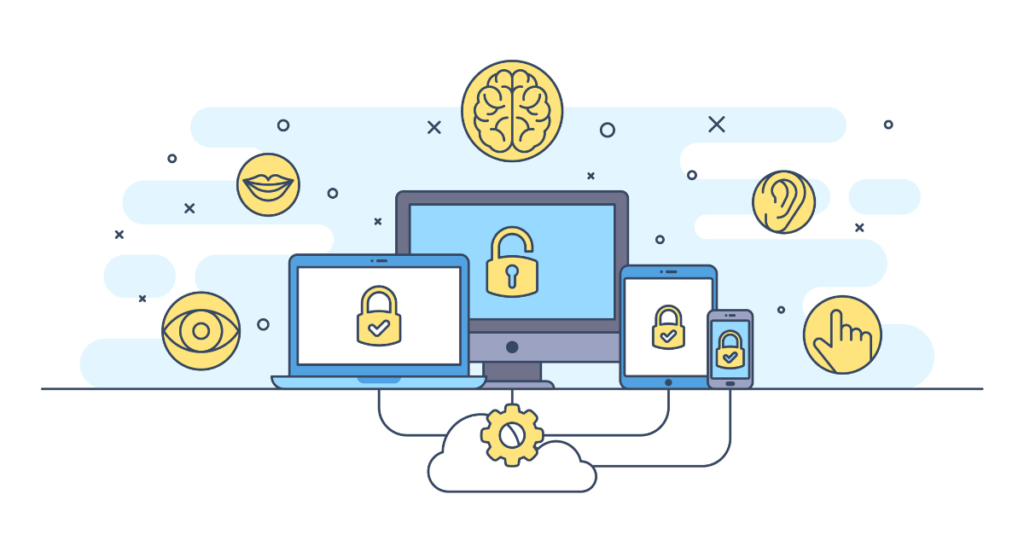Question — when was the last time you gave some thought to accessibility when building out your website?
Now as a follow up — when was the last time you thought about this in relation to SEO optimizations for your website? Many of us are becoming familiar with the idea of alt text, captions, and well-contrasted colors, but accessibility can also play an essential role in search engine performance. When accessibility becomes a regular part of your SEO improvements, everyone wins.
What is Accessibility (and What Does it Look Like in SEO?)
Accessibility refers to the process of making something available or obtainable for anyone, regardless of ability. You’ll often hear this term used in reference to those with disabilities that prevent them from fully being able to utilize something in the same way as someone else. They may be hearing or visually impaired or experience a learning difference that prevents them from understanding information or going about every day tasks in the same way.
In the real world, this could look like installing elevators or ramps, incorporating Braille or raised signage, or push plate handles and automatic doors. The same ideas apply on the internet, it just manifests in a different way. We should be conscious of design elements and consistency to ensure those with disabilities are able to browse and surf without an issue.
With the way internet works, it’s no wonder that SEO has also become a component that ties into accessibility. While the relationship is evolving and will continue to grow as we innovate, at the very least we have an understanding that inclusive accessibility measures are becoming increasingly important for SEO.
Consider your metadata, anchor texts, or tags. All this goes into improving the quality and visibility of your site. If you do it right, those using assistive technology will also be able to scroll through results and gain an accurate understanding of what you offer. Better (and more accessible!) user experiences will end up impacting your overall search engine rankings.
Why Web Accessibility Matters
Social media aside, websites are also a major source of information for internet users. This is how people read reviews, look up menus, explore ideas, engage in discussions, etc. Making sure that this incredible network of knowledge and connection is available for use for everyone should always be a top priority for all those involved.
When websites are accessible, users are easily able to find what they need while also enjoying a seamless experience. There are a variety of situations where a user may benefit from the added consideration in SEO whether they live with auditory, cognitive, physical, neurological, or visual disabilities or are faced with temporary impairments like being stuck with slow internet, dealing with less-than-ideal work environments, or recovering from an injury.
Brands that make accessibility a core mission of theirs will find that there are positive impacts all around whether it’s for those who are using the site or the company itself.
Does Accessibility Affect SEO?
You may be by wondering how exactly SEO and accessibility are connected. It can be much easier to understand the impact that design or web development has on those who need accommodations. While SEO isn’t always mentioned, it is clearly there and optimizing these aspects of your site to be user-friendly will be obvious (not just to your audience, but also to search engines like Google that see value in measuring your site’s accessibility).
These two concepts also go hand-in-hand. When accessibility is improved, SEO also performs better. Think about it this way — search engines are ranking websites based on all sorts of metrics but, at the end of the day, are most concerned with presenting users with content that’s relevant. Your page will perform much better with users if it’s well created for all audiences. When your audience loves your site, search engines will pick up on that and also follow suit.
Accessibility Best Practices
Let’s go over some of the elements of SEO that could use an accessibility lens:
Page titles and tags: Be conscious when creating your page titles. These should be descriptive enough that people know exactly what they’re going to get from the page.
In relation, the page’s title relates to the title tag which clues your audience in on the content. It should be useful in showing users and search engines relevant content. When both of these match and are well thought out, it makes your page easier to find.
Headings: Headings are a quick way for someone to scan your content and find what they’re looking for or get a general understanding of what’s covered. They’re ideal for user experience because it makes it easy for the user to find what they’re looking for. Headings are also invaluable to screen readers to navigate content on a page.
Links: SEO strategists know that links or anchor text are some of the best ways to build credibility. It’s a key tool to connecting various aspects of the customer experience. Taking accessibility into account when creating your links is a major plus to search engines because it helps them understand what your page is all about.
To do well here, utilize descriptive and relevant copy. “Click here” can be pretty vague to someone that’s using assistive tools. There’s not enough information there. Something like “download our marketing guide” works better.
Non-text content: Copy isn’t the only piece of content on our websites. There’s probably a good amount of images, audio, and video across your website in addition to text. They add a lot to your story and should be treated as such.
If accessibility measures weren’t taken here, users with disabilities would have no way to know what’s on the page. Including alternative text or captions would be an easy solution to this. It can also come in handy for situational impairments such as spotty internet or spaces where audio can’t be played aloud.
The Takeaway
There’s a long way to go. After all, there’s no telling what ideas people will come up with for websites and how we’ll work to make those usable for everyone. SEO and accessibility have always been tied together and that’s never been more obvious than it is in this day and age. Google is already measuring accessibility using their own testing tools. How soon do you think it will be before it becomes the next update to the search engine algorithm? Making sure everything you’re setting up now is user-friendly will help future-proof against any updates.
Beyond that, keeping accessibility best practices at the forefront of your SEO work is good for users and who doesn’t want that? Websites should be enjoyed by everyone without frustration or the need to jump through difficult hoops. As the innovators in charge of leading the next generation of marketers, this is a reality that we should all be committed to.
This content was originally published here.




